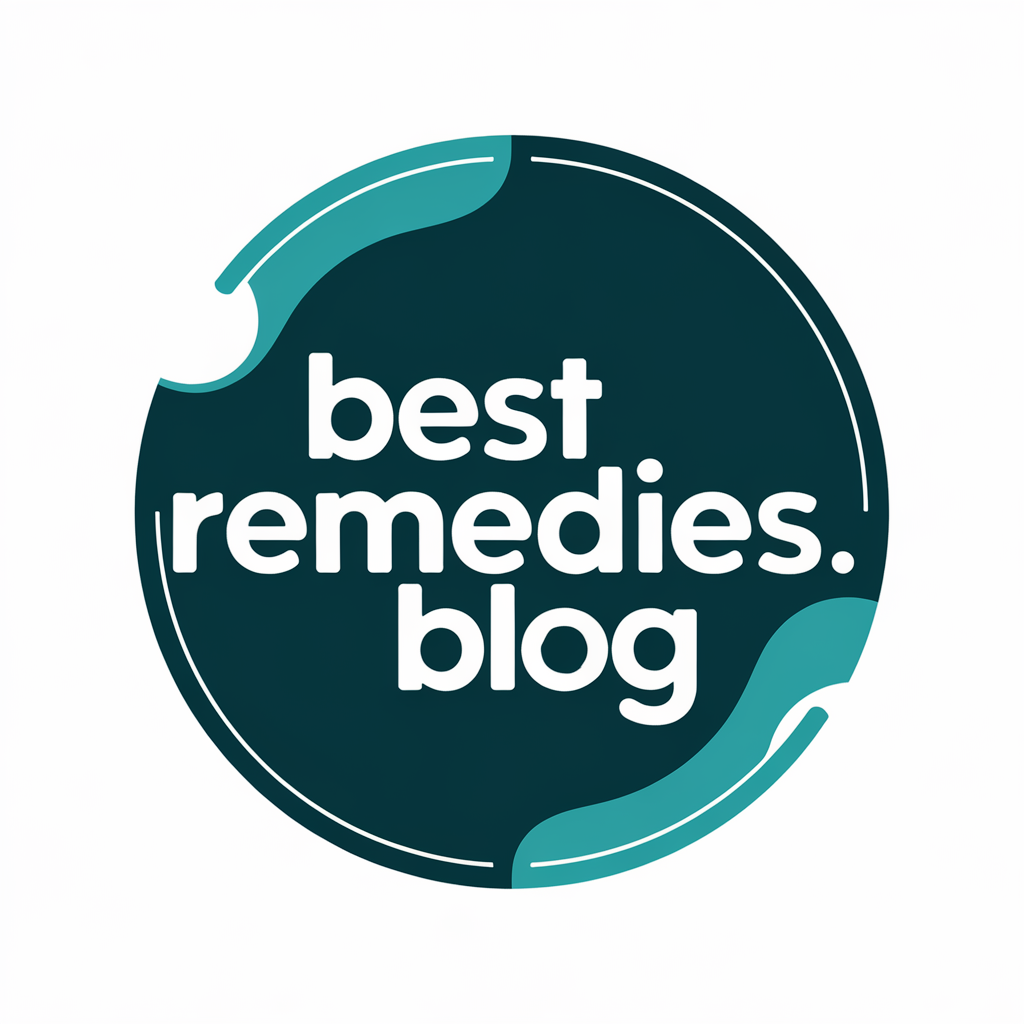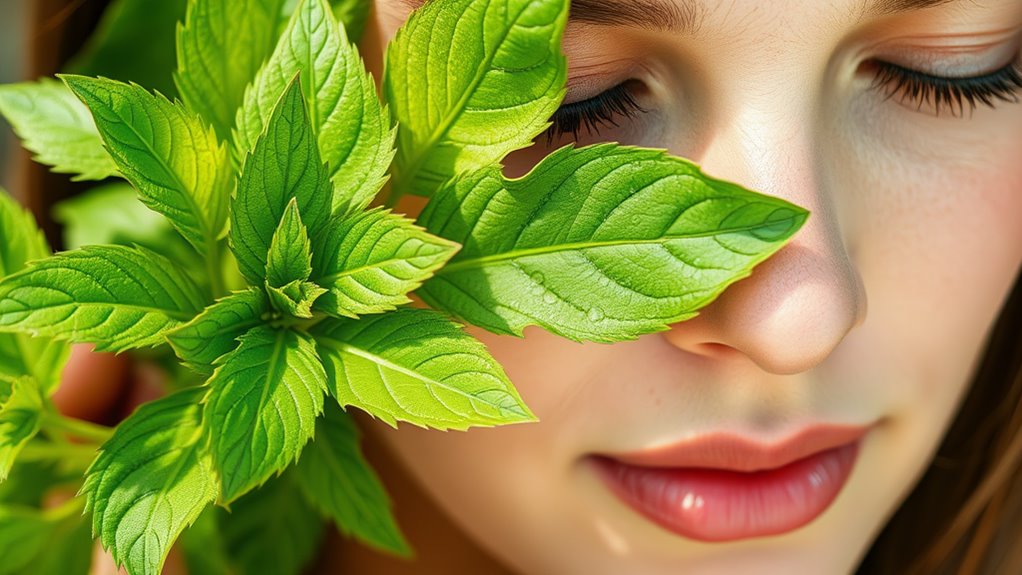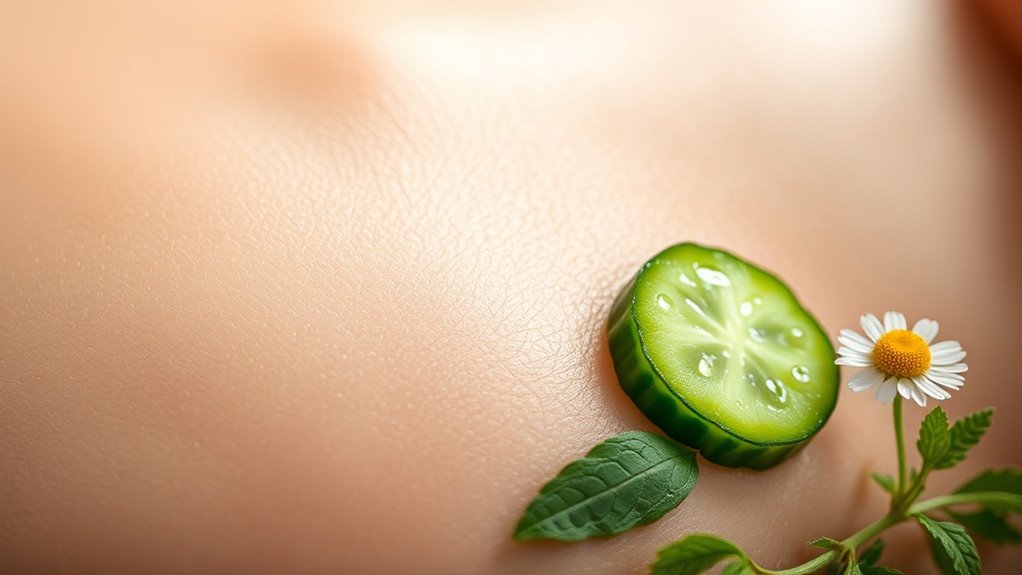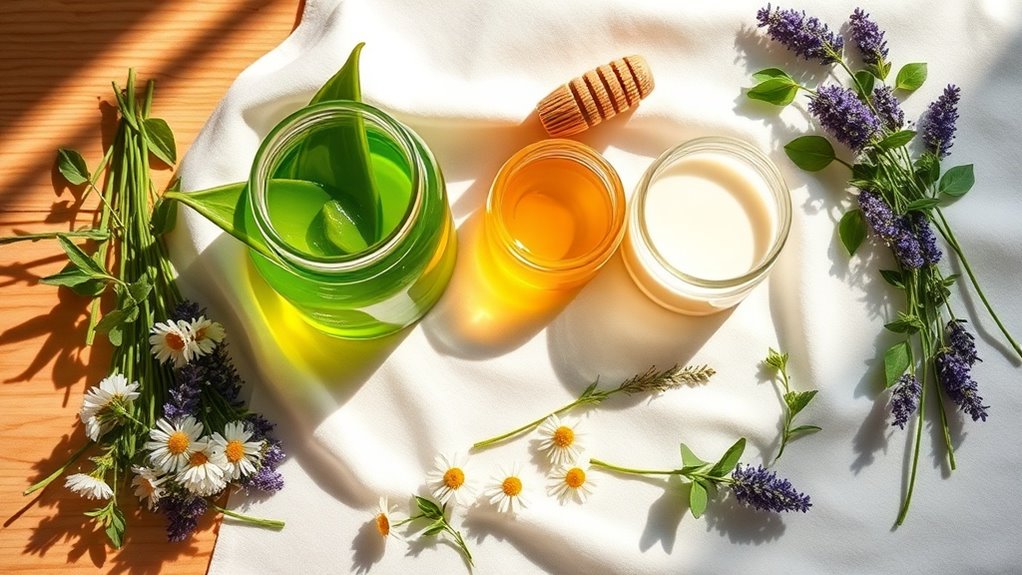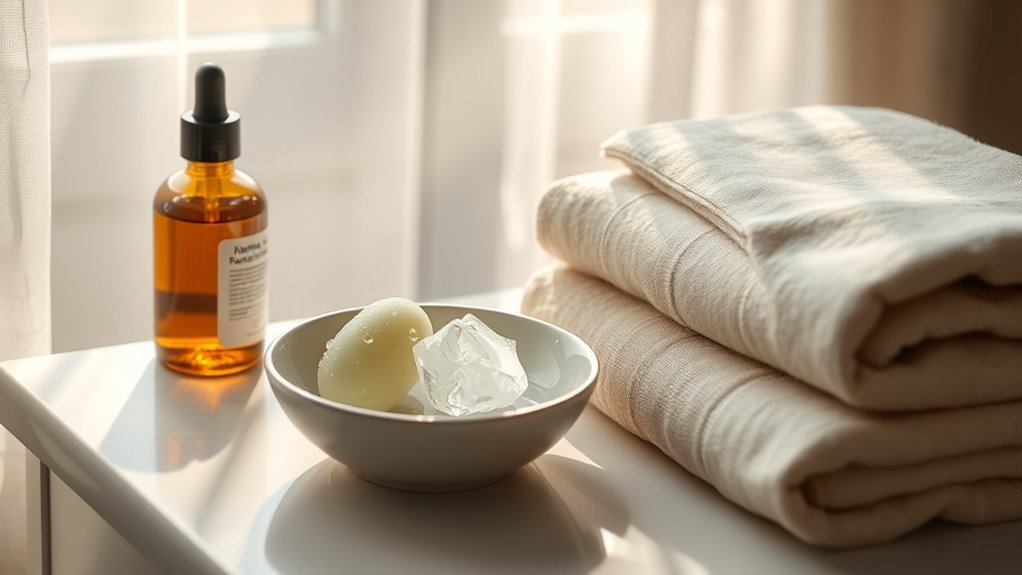This Common Herb Calmed My Face Inflammation
Even if you’re skeptical about natural remedies, chamomile’s anti-inflammatory flavonoids are backed by studies that reduce facial redness. You’ll brew a simple infusion to soothe your skin quickly, noticing real improvements. Stick with us to explore how it transformed my routine and could ease yours.
Key Takeaways
- Chamomile, a common herb, effectively reduces facial inflammation through its anti-inflammatory compounds.
- Its flavonoids neutralize free radicals, preventing oxidative damage and promoting skin healing.
- The herb evens skin tone and decreases breakouts by inhibiting bacterial growth and regulating sebum.
- Prepare a chamomile infusion by steeping leaves in hot water for 5-10 minutes and apply as a compress.
- Monitor skin response and combine with a nutrient-rich diet for sustained inflammation relief.
The Herb That Changed My Skin
Have you ever discovered a simple herb that could transform your skin’s health?
You’re exploring a powerful herbal face remedy that science supports for soothing irritation.
Research highlights herbs like chamomile, with their anti-inflammatory compounds, which actively reduce redness and promote healing when applied topically.
As an evidence-based option, it calms skin naturally, drawing from centuries of traditional use backed by modern studies.
You’ll integrate this remedy easily into your routine, yielding clearer, more resilient skin through consistent, gentle application.
Trust its authoritative role in natural skincare.
For even better results, try combining it with green tea bags to enhance the soothing effects.
Causes of Facial Inflammation
Several factors, including environmental irritants and internal imbalances, commonly trigger facial inflammation by activating your skin’s immune defenses. You might experience this from daily exposures like pollution or allergens, which overwhelm your skin’s barrier, or from stress and dietary triggers that disrupt internal harmony. Understanding these causes helps you take control. Incorporating omega-3 fatty acids into your diet can help reduce inflammation and support skin health.
| Cause | How It Triggers Inflammation |
|---|---|
| Environmental irritants | Directly activates immune cells |
| Internal imbalances | Disrupts hormonal and microbial balance |
| Allergens | Prompts histamine and swelling response |
| Stress and lifestyle | Elevates cortisol, inflaming tissues |
Key Properties of This Herb
This herb, renowned for its anti-inflammatory effects, contains key compounds like flavonoids and antioxidants that actively reduce facial swelling by inhibiting inflammatory pathways in your skin.
Flavonoids, for instance, neutralize free radicals, preventing oxidative damage that exacerbates inflammation.
You’ll find these antioxidants bolster your skin’s barrier, as research confirms they modulate immune responses.
Additionally, the herb’s phenolic acids offer antimicrobial properties, combating bacteria that trigger flare-ups.
For optimal results, many individuals incorporate this herb alongside other natural ingredients to enhance its soothing effects on facial inflammation.
Simple Ways to Prepare the Remedy
Preparing this herb for facial inflammation is straightforward and effective, allowing you to harness its anti-inflammatory properties at home.
Begin by selecting fresh or dried leaves, as studies confirm both retain potent compounds like flavonoids.
To create an infusion, boil water and steep one teaspoon for 5-10 minutes, extracting key anti-inflammatory agents.
For a paste, grind the leaves with minimal water, a technique backed by research for concentrating bioactive elements.
